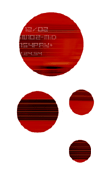

 |
 |
scientific program electroacoustic musics around set theory music analysis tools musicnetwork workshop professional week ircam forum workshops free software for music international multichannel sound forum performing arts and technologies dance and new technologies access to sound heritage thematic evenings demonstration stands artistic program set theory concert music in creation concert cursus concerts opera "one" sound installations open house weekend technologies gallery conferences demonstrations workshop-performances workshops and films ircam laboratories linux install-party concert distribution on internet associated events resonances night at glaz'art émilie simon at la cigale suguru goto reseaunances guided tours of ircam and the multimedia library resonances in pictures resonances 2002 
|
OLIVIER CARPENTIERMachine Versus Instrument - Debates about the first Electronic Organ 1930-1935.AbstractAround 1930, French engineers Armand Givelet and Eloi Coupleux used to build the first electronic organ in History, which is rediscovered today. This enormous and complex instrument, made of hundreds of vacuum tube oscillators, attempted to set the young electronic synthesis in the conservative universe of occidental classic and religious music. With the help of famous musicians and journalists, the instrument soon got an amazing reputation and several Coupleux-Givelet organs were installed in churches and auditoriums in France between 1931 to 1934. Brought by the new technology, the confrontation between the synthetic and acoustic way of producing organ music created a rich debate in the scientific, musical and even religious circles. On the technical front, actually, the Coupleux-Givelet Organ combining additive and subtractive synthesis opened the way of polyphonic synthesis and artificial timbres, and enhanced the possibilities of sonic spatialisation and musical broadcasting. In an artistic perspective, moreover, it aroused many essential thoughts about the main issues of XXth century's electronic music. |
|||||||||||||||||||||||||||||||
 |
Organization Committee Copyright Ircam-Centre Pompidou 2003 |